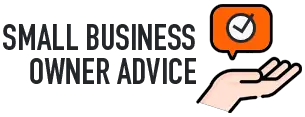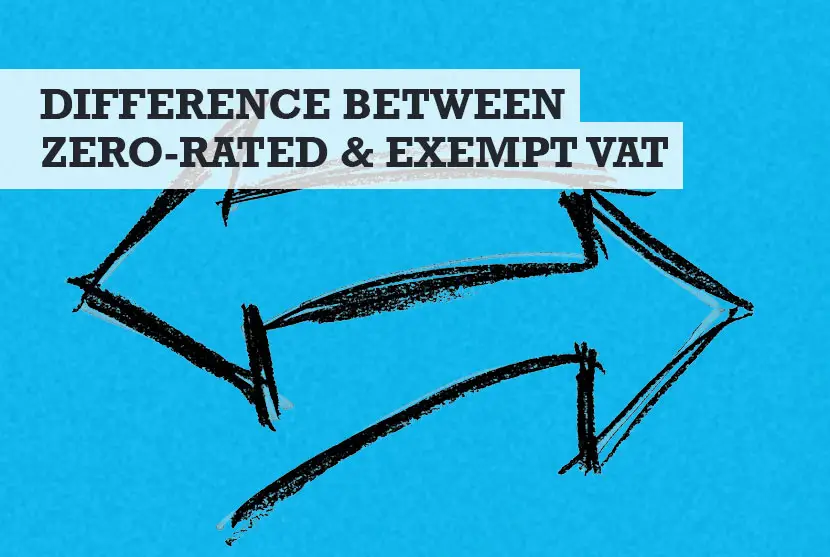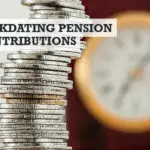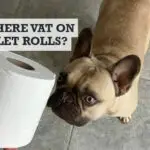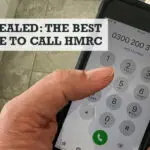To most, the rate of VAT in the UK is 20% or zero, but nothing in the UK tax system is ever quite that is simple. If you are running a small business and you are unaware of the differences between zero rated and tax-exempt VAT rates, how do you know that you are doing things correctly?
Getting your VAT wrong could lead to significant cash flow problems if you need to make corrections and even worse if penalties and fines are added.
But it’s not always obvious what the difference between zero-rated and exempt VAT is. Here’s a quick-fire answer for you followed by more detail.
What is the difference between zero rated and tax exempt?
The difference between zero rated and exempt VAT is where exempt items differ from zero-rated supplies. In both cases, VAT is not added to the selling price, but zero-rated goods or services are taxable for VAT at 0%. If you only sell or supply goods or services that are exempt from VAT your business is considered an exempt business and you cannot register for VAT or recover VAT on purchases or expenses.
Getting this wrong can add up to a sizeable amount of money across the financial year. It is always best to double-check receipts and invoices for evidence of VAT. This isn’t always easy as there are many exceptions to the rules when it comes to VAT and how it is displayed on receipts and invoices.
Handy Hint: For example, it’s not always obvious how supermarket receipts show VAT. We’ve put some notes together on stores including Tesco and Sainsburys to help you.
What is zero-rated VAT?
Zero-rated VAT is where supplies of goods or services are vatable but at a rate of 0%. I know what you are thinking and yes it seems illogical, but it allows the government an element of flexibility around the cost of goods to the end customer.
In Budget 2020, the government announced that from 1 January 2021 Women’s sanitary products (WSP) would be subject to the zero rate of VAT.
The Finance Act 2016 commits the Government to introduce a zero rate of VAT for WSPs on “the earliest date that may be appointed consistently with the United Kingdom’s EU obligations.” This legal obligation arose when the transition period ended on 31 December 2020. Before this date sales of WSP products were subject to the reduced rate of VAT (5%).
This enabled the government to have an element of control over the cost of WSP to the end customer. That can only be a good thing when used in circumstances like this.
Zero-rated VAT still constitutes a taxable supply albeit at 0%. The government doesn’t tax the sale but allows the tax paid on inputs to be reclaimed.
This will become a bit clearer when looking at exempt VAT below.
Examples of zero-rated VAT supplies which differ to exempt VAT include:
- Food and drink for human consumption (some items are standard rated)
- Certain animals, animal feeding products
- Plants and seeds
- Certain supplies to charities
- Utilities
- Certain building and construction, land, and property
- Certain transport, freight, travel, and vehicles
- Children’s clothes and footwear
- Certain protective and safety equipment
This is not an exhaustive list which can be found in the HMRC rates of vat on different goods and services.
Please be sure to double-check with your accountant, bookkeeper, or the tax office if you are unsure what VAT tax rate you should be applying to your supplies.
They should also be able to confirm any more queries you have over zero rated and exempt differences.
Do not confuse zero-rated with exempt. Whilst they both may attract a £0 VAT charge, they are different. When entering your purchases into your accounting records make sure to use the zero-rated tax rate option instead of exempt.
What is exempt VAT?
Some goods and services and some types of businesses are exempt from VAT. That means they would not charge VAT on goods or services provided and therefore the recipient has no VAT to reclaim on the purchases.
Exempt VAT supplies are outside the VAT regime and are not taxable items and no VAT is charged.
Examples of exempt goods and services:
- insurance, finance, and credit
- education and training
- fundraising events by charities
- subscriptions to membership organisations
- selling, leasing, and letting of commercial land and buildings — this exemption can be waived
This is not an exhaustive list which can be found in the HMRC rates of vat on different goods and services.
These items are exempt from VAT so are not taxable. You do not include sales of exempt goods or services in your taxable turnover for VAT purposes. And if you buy exempt items, there is no VAT to reclaim.
Exempt items are different from zero-rated supplies. In both cases, VAT is not added to the selling price, but zero-rated goods or services are taxable for VAT — at 0%.
Please be sure to double-check with your accountant, bookkeeper, or the tax office if you are unsure what VAT tax rate you should be applying to your supplies.
Do not confuse exempt with zero-rated. Whilst they both may attract a £0 VAT charge, they are different. When entering your purchases into your accounting records make sure to use the exempt tax rate option instead of the zero-rated tax rate.
What is the difference between zero-rated VAT and exempt VAT?
If you only sell or otherwise supply goods or services that are exempt from VAT, then yours is an exempt business and:
- you cannot register for VAT
- you cannot recover any VAT you incur on your purchases or expenses
This contrasts with where you sell or otherwise supply zero-rated goods or services. Here you can reclaim the VAT on any purchases that relate to those sales.
You may only have some sales which are exempt in which case the partial exemption rules may apply. Read on for further guidance.
If you sell mainly or only zero-rated items, you can apply for an exemption from VAT registration. If you are exempt from registration you will not be able to reclaim any VAT. Read paragraph 3.11 of VAT Notice 700/1to find out how to apply.
What if only some of my supplies are exempt from VAT?
Some goods and services are exempt from VAT. If all the goods and services you sell are exempt, your business is exempt, and you will not be able to register for VAT. This means you cannot reclaim any VAT on your business purchases or expenses.
If you are VAT-registered and incur VAT on any items that will be used to make exempt supplies, you are classed as partly exempt.
Generally, you will not be able to reclaim exempt input tax. However, provided the amount of exempt input tax is below a certain amount, it can be recovered in full.
You cannot reclaim VAT you pay on goods and services that are not for business purposes.
If your business is partly exempt and you buy goods or services that you use partly for business and partly for non-business purposes, you must split the VAT accordingly. You then use your partial exemption method in paragraph 3.9 of VAT Notice 706 to work out how much of the business VAT you can reclaim.
If you make both taxable and exempt supplies, you must keep a separate record of your exempt sales and details of how you’ve worked out how much VAT to reclaim.
Do exempt sales get included in Box 6 of a VAT return?
The notes provided by HMRC read as follows: “In box 6 show the value excluding VAT of your total outputs (supplies of goods and services). Include zero-rated, exempt outputs and EU supplies from box 8.”
If you select the correct VAT tax code when postings transactions in your accounting software, it will do this automatically.
Box 6 total value of sales and all other outputs excluding any VAT
Show the total value of all your business sales and other specific outputs but leave out any VAT. Some examples are:
- zero rate, reduced rate and exempt supplies
- fuel scale charges (read Motoring expenses (VAT Notice 700/64))
- exports
- supplies to EU member states, if the goods are moved from Northern Ireland (that is any figure entered in box 8)
- supplies of installed or assembled goods in the UK where the overseas supplier registers for VAT here
- distance sales to Northern Ireland which are above the distance selling threshold or, if below the threshold the overseas supplier opts to register for VAT in the UK
- reverse charge transactions (read paragraph 4.6)
- supplies which are outside the scope of UK VAT as described in Place of supply of services (VAT Notice 741A)
- deposits that an invoice has been issued for
But you do not include in box 6 any of the following:
- money you’ve personally put into the business
- loans, dividends, and gifts of money
- insurance claims
- Stock Exchange dealings (unless you’re a financial institution)
Do exempt purchases get included in Box 7 of a VAT return?
Exempt costs will still be included in box 7 of your VAT return. If you select the correct VAT tax code when postings transactions in your accounting software, it will do this automatically.
Box 7 the total value of purchases and all other inputs excluding any VAT
Show the total value of your purchases and expenses but leave out any VAT.
You must include the value of:
- imports
- acquisitions of goods you bring into Northern Ireland from EU member states (that is any figure entered in box 9)
- ‘Reverse charge’ transactions (read paragraph 4.6)
But do not include the value of any of the following:
- wages and salaries
- PAYE and National Insurance contributions
- money taken out of the business by you
- loans, dividends, and gifts of money
- insurance claims
- Stock Exchange dealings (unless you’re a financial institution)
- MOT certificates
- motor vehicle licence duty
- local authority rates
- income that’s outside the scope of VAT because it is not consideration for a supply
Further notes on zero rated and exempt differences
Examples of zero-rated goods and services
Zero-rated items are goods on which the Government charges VAT, but the rate is currently set to 0%. This can change from time to time but in general zero-rated VAT is applied to items that are a necessity. By adding the standard rate of VAT to them could put the purchaser in a difficult position.
Examples of zero-rated VAT supplies
- food and drink for human consumption is usually zero-rated but some items are always standard rated. These include catering, alcoholic drinks, confectionery, crisps and savoury snacks, hot food, sports drinks, hot takeaways, ice cream, soft drinks, and mineral water.
- certain animals, animal feeding products, plants and seeds also qualify for the zero rate, but only if the conditions in the following VAT notices are met, however products packaged as pet food are standard rated.
- certain printing materials depending on their use such as brochures, leaflets, and pamphlets
- certain services provided to charities
- certain equipment and services provided for disabled people
- dispensing of prescriptions and certain other health products
- sewerage and water services provided to households
- freight transport outside the UK
- passenger transport that carries not less than 10 passengers
- certain vehicle goods and services
- most publications such as magazines, newspapers, and books
- babywear, children’s clothes, and footwear
This is not an exhaustive list which can be found in the HMRC rates of vat on different goods and services.
Please be sure to double-check with your accountant, bookkeeper, or the tax office if you are unsure what VAT tax rate you should be applying to your supplies.
Do not confuse zero-rated with exempt. Whilst they both may attract a £0 VAT charge, they are different. When entering your purchases into your accounting records make sure to use the zero-rated tax rate option instead of exempt.
Examples of exempt VAT supplies
In this article on what the difference is between zero-rated and exempt VAT we have discussed in length what those terms mean. But in a day-to-day practical sense, we are sure you would like to understand some real-world examples of what UK supplies are exempt VAT. Below we have listed a few common items:
Examples of VAT exempt supplies
- insurance, finance, and credit
- education and training
- fundraising events by charities
- subscriptions to membership organisations
- selling, leasing, and letting of commercial land and buildings (this exemption can be waived)
- sporting activities and physical education
- some food and drink
- some medical supplies
- health services
This is not an exhaustive list which can be found in the HMRC rates of vat on different goods and services.
Please be sure to double-check with your accountant, bookkeeper, or the tax office if you are unsure what VAT tax rate you should be applying to your supplies.
Do not confuse exempt with zero-rated. Whilst they both may attract a £0 VAT charge, they are different. When entering your purchases into your accounting records make sure to use the exempt tax rate option instead of zero-rated.
The cost of getting this wrong could be significant to your business and the last thing you would like to do is trigger an HMRC investigation.
Conclusion
The difference between zero rated and exempt VAT might not be something you’ve ever been able to quite get your head around. And we don’t blame you, as it’s one of many aspects of the UK tax system.
For example, in 2009 it was reported that the UK tax code had exceeded that of India and, at 11,520 pages was the longest in the world.
The UK tax system is a complicated place to try and understand the subtleties and nuances of VAT. Trying to work out which products and services are standard rated, zero rated and exempt is confusing and complicated.
Therefore, we would highly recommend seeking the advice of a professional such as a HMRC, an accountant or a bookkeeper.
Even if you are using bookkeeping software you cannot rely on the VAT return being correct unless you know you have applied the rules to your sales and purchases. It is your responsibility as a business owner to get this right even if you pay someone else to process transactions for you.
Make sure you understand the business you are in and what VAT you should be applying. There may even be differences amongst the products and services you sell so you cannot assume anything in this respect.
More small business owner guides…

Jon has been in business since 1999, and in that time worked with more than 300 small business clients. As well as being an accountant, he is also an early adopter of tech, and has helped small businesses to leverage the power of their computer systems by creating software to automate and simplify accounting tasks.
